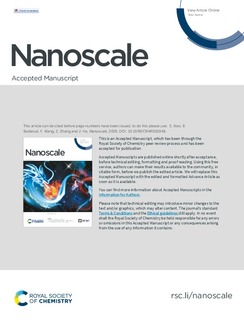| dc.contributor.author | Xiao, Senbo | |
| dc.contributor.author | Skallerud, Bjørn Helge | |
| dc.contributor.author | Wang, Feng | |
| dc.contributor.author | Zhang, Zhiliang | |
| dc.contributor.author | He, Jianying | |
| dc.date.accessioned | 2019-08-19T07:16:13Z | |
| dc.date.available | 2019-08-19T07:16:13Z | |
| dc.date.created | 2019-08-15T10:48:11Z | |
| dc.date.issued | 2019 | |
| dc.identifier.issn | 2040-3364 | |
| dc.identifier.uri | http://hdl.handle.net/11250/2608887 | |
| dc.description.abstract | State-of-the-art passive icephobicity relies mainly on static parameters such as surface energy, coating elastic modulus, crack sizes and so on. Low ice adhesion resulting from dynamic de-icing process, for instance ice detaching modes from substrates, has not yet been explored. In the current study, atomistic modeling and molecular dynamics simulations were employed to identify ice rupture modes as crucial dynamic factors for surface icephobicity. A fish-scale-like icephobic surface prototype enabling low-adhesion sequential rupture of the atomistic interactions at the ice-solid interface was proposed. The novel surface has an intrinsic extended interface rupture pathway, which can lead to a ~60% reduction in atomistic ice adhesion compared with concurrent ice rupture. This study sheds light on interface mechanical design for surface icephobicity, and could provide solutions for anti-icing, nanoscale tribology and many others. The concept of implementing interfacial rupture modes proposed in this study can also apply to interface design for tailored adhesion mechanics. | nb_NO |
| dc.language.iso | eng | nb_NO |
| dc.publisher | Royal Society of Chemistry | nb_NO |
| dc.title | Enabling Sequential Rupture for Lowering Atomistic Ice Adhesion | nb_NO |
| dc.type | Journal article | nb_NO |
| dc.type | Peer reviewed | nb_NO |
| dc.description.version | acceptedVersion | nb_NO |
| dc.source.journal | Nanoscale | nb_NO |
| dc.identifier.doi | 10.1039/C9NR00104B | |
| dc.identifier.cristin | 1716097 | |
| dc.relation.project | Norges forskningsråd: 250990 | nb_NO |
| dc.relation.project | Notur/NorStore: NN9110k | nb_NO |
| dc.relation.project | Notur/NorStore: NN9391k | nb_NO |
| dc.description.localcode | © 2019. Locked until 14.6.2020 due to copyright restrictions. This is the authors' accepted and refereed manuscript to the article. The final authenticated version is available online at: http://dx.doi.org/10.1039/C9NR00104B | nb_NO |
| cristin.unitcode | 194,64,45,0 | |
| cristin.unitname | Institutt for konstruksjonsteknikk | |
| cristin.ispublished | true | |
| cristin.fulltext | postprint | |
| cristin.qualitycode | 1 | |
